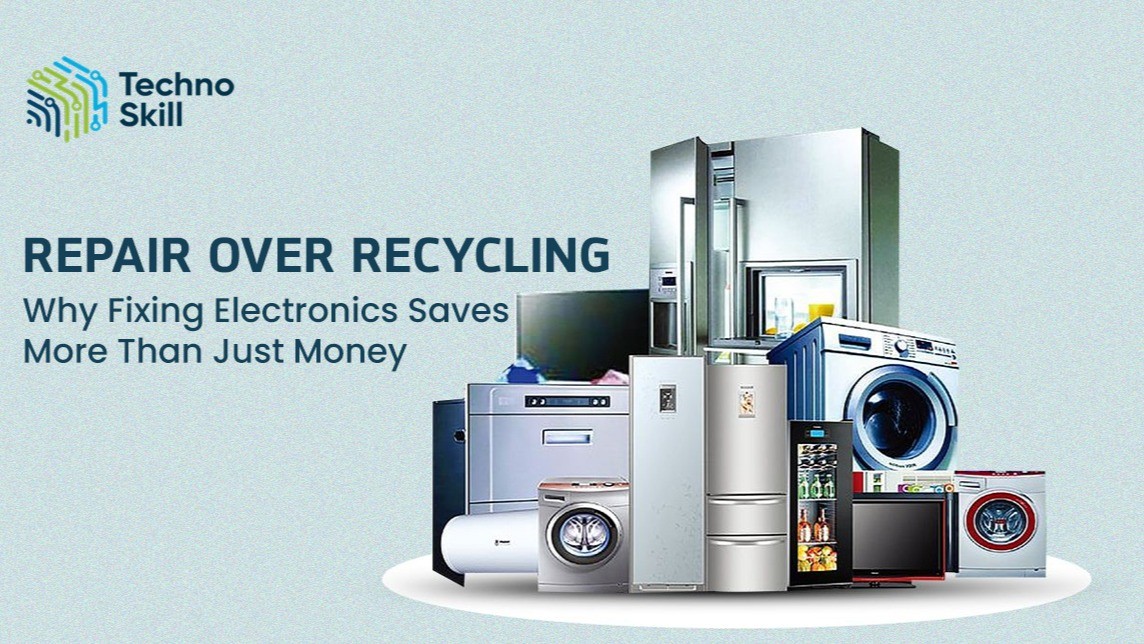In today’s fast-paced world, electronic devices and machinery are often replaced rather than repaired. This culture of disposal has led to rising e-waste levels, resource depletion, and financial inefficiencies. While recycling is often hailed as the solution to managing waste, repairing electronic equipment is a far more sustainable and cost-effective alternative. It extends product lifespan, reduces environmental impact, and offers financial benefits that recycling alone cannot achieve.
The Environmental Impact of Recycling vs. Repairing
Recycling is an essential part of waste management but comes with its own set of challenges. The process of breaking down electronic waste consumes significant energy and often involves the release of toxic substances. Many electronics contain hazardous materials such as lead, mercury, and cadmium, which, when improperly handled, contribute to environmental pollution.
Recycling also requires raw materials to be processed again, adding to carbon emissions. In contrast, repairing extends the useful life of products, reducing the demand for new manufacturing. Manufacturing new electronic devices involves mining raw materials, heavy industrial processing, and transportation, all of which increase carbon footprints. Repairing eliminates much of this, preserving resources and limiting pollution.
Financial Advantages of Repairing Over Recycling
For businesses and consumers, repair offers long-term cost savings. Replacing a malfunctioning component is often far cheaper than buying a new device. Industries that rely on electronic equipment, such as manufacturing and telecommunications, benefit greatly from extending the life of their machinery. Routine maintenance and timely repairs prevent costly breakdowns and the need for frequent replacements.
Recycling, on the other hand, often incurs costs. Many recycling programs require businesses and consumers to pay for proper disposal. Additionally, recycling does not guarantee that all materials will be recovered efficiently. Some components are too costly to extract, leading to wasted resources. By contrast, repair maximizes the value of the original product, allowing continued use without the financial burden of repurchasing.
The Role of Repair in Reducing E-Waste
E-waste is one of the fastest-growing waste streams globally. Millions of tons of discarded electronics end up in landfills every year, where they leach harmful chemicals into the soil and water. While recycling attempts to mitigate this issue, it does not address the root cause—premature disposal of functional electronics.
Encouraging repair culture ensures that fewer devices reach landfills. Governments and businesses can support this by making repair services more accessible. Right-to-repair policies, which grant consumers and third-party technicians access to spare parts and repair manuals, are gaining momentum in many countries. These laws help extend product lifespans and reduce reliance on recycling as the primary waste management method.
Overcoming Barriers to Repair
Despite its advantages, repair is not always the preferred choice. One major barrier is the lack of available spare parts. Many manufacturers design products to be difficult or impossible to repair, leading to unnecessary replacements. Proprietary screws, sealed components, and software restrictions discourage users from fixing their devices.
Another challenge is the perception that repair is inconvenient or outdated. Many consumers believe that buying new is easier than repairing. Educational initiatives and repair-focused businesses can help shift this mindset by demonstrating the practicality and benefits of repair services.
How Businesses Can Integrate Repair into Their Sustainability Strategies
Companies can incorporate repair into their sustainability goals by offering extended warranties and repair services. Designing products with modular components that can be easily replaced or upgraded encourages longer use cycles. Businesses can also establish trade-in and refurbishment programs, allowing old devices to be repaired and resold instead of being discarded.
Repair services create job opportunities, particularly in the technical and skilled labor sectors. A thriving repair industry supports local economies and provides valuable employment in an era where job displacement due to automation is a growing concern.
Consumer Role in Prioritizing Repair
Consumers can contribute to a more sustainable future by choosing repair over replacement. Supporting businesses that offer repair-friendly products, investing in durable electronics, and seeking out repair professionals help drive demand for a more sustainable economy. Awareness campaigns and repair cafés, where communities come together to fix items, further encourage a shift towards repair culture.
Conclusion
While recycling is a necessary part of waste management, it should not be the primary solution for dealing with electronic waste. Repairing electronics conserves resources, reduces emissions, and saves money. By making repair services more accessible and shifting consumer mindsets, businesses and individuals can significantly decrease their environmental footprint. Emphasizing repair over recycling is a practical step toward a more sustainable and financially efficient future.
#Sustainability #EWasteReduction #PCBRepair #TechnoSkillElectronics #CircularEconomyred environment.

